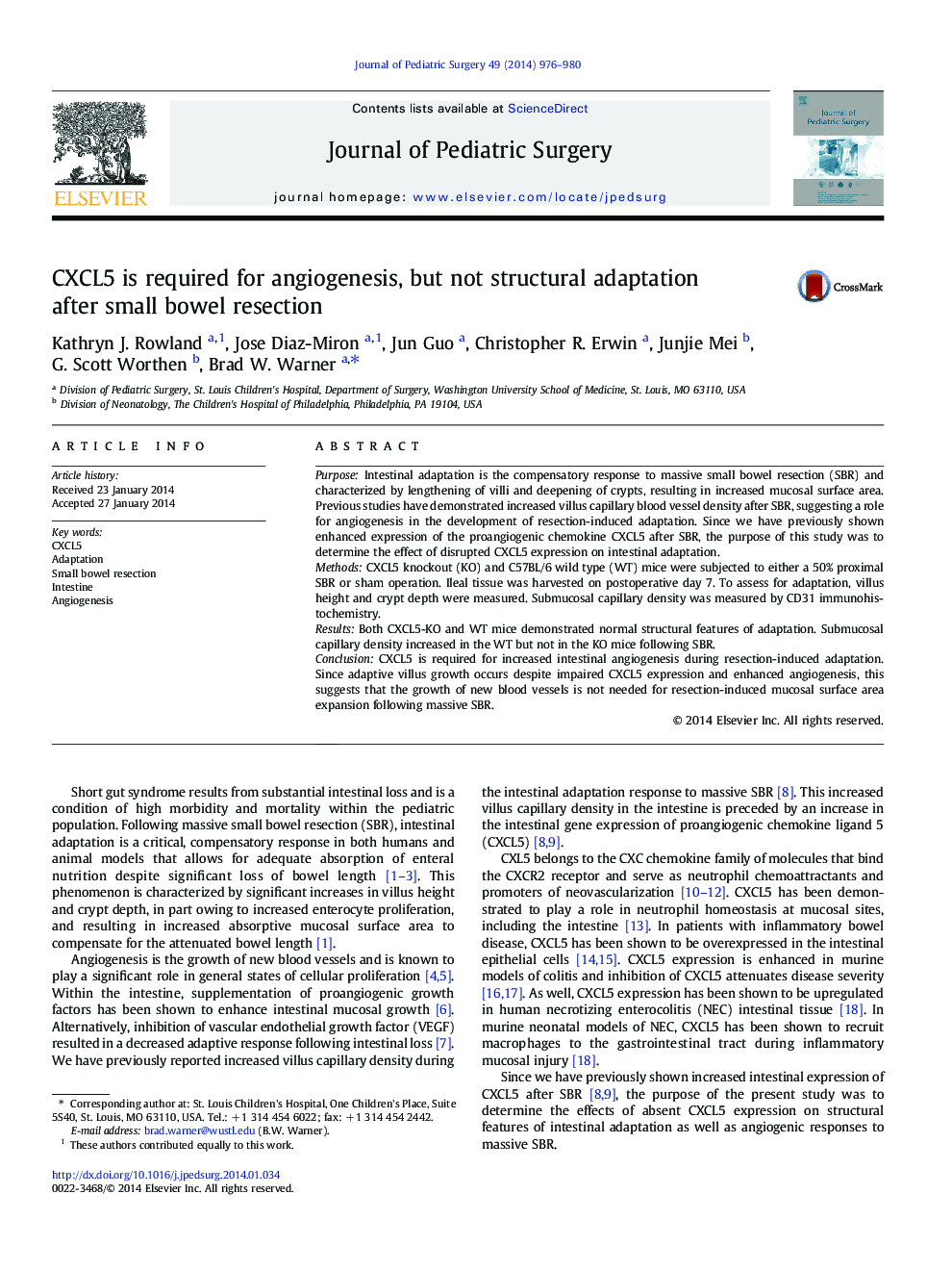| Article ID | Journal | Published Year | Pages | File Type |
|---|---|---|---|---|
| 6217374 | Journal of Pediatric Surgery | 2014 | 5 Pages |
PurposeIntestinal adaptation is the compensatory response to massive small bowel resection (SBR) and characterized by lengthening of villi and deepening of crypts, resulting in increased mucosal surface area. Previous studies have demonstrated increased villus capillary blood vessel density after SBR, suggesting a role for angiogenesis in the development of resection-induced adaptation. Since we have previously shown enhanced expression of the proangiogenic chemokine CXCL5 after SBR, the purpose of this study was to determine the effect of disrupted CXCL5 expression on intestinal adaptation.MethodsCXCL5 knockout (KO) and C57BL/6 wild type (WT) mice were subjected to either a 50% proximal SBR or sham operation. Ileal tissue was harvested on postoperative day 7. To assess for adaptation, villus height and crypt depth were measured. Submucosal capillary density was measured by CD31 immunohistochemistry.ResultsBoth CXCL5-KO and WT mice demonstrated normal structural features of adaptation. Submucosal capillary density increased in the WT but not in the KO mice following SBR.ConclusionCXCL5 is required for increased intestinal angiogenesis during resection-induced adaptation. Since adaptive villus growth occurs despite impaired CXCL5 expression and enhanced angiogenesis, this suggests that the growth of new blood vessels is not needed for resection-induced mucosal surface area expansion following massive SBR.
